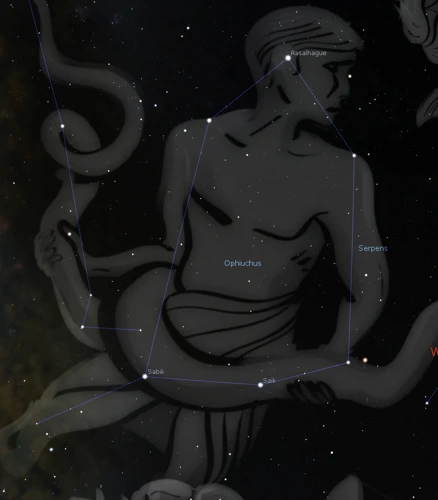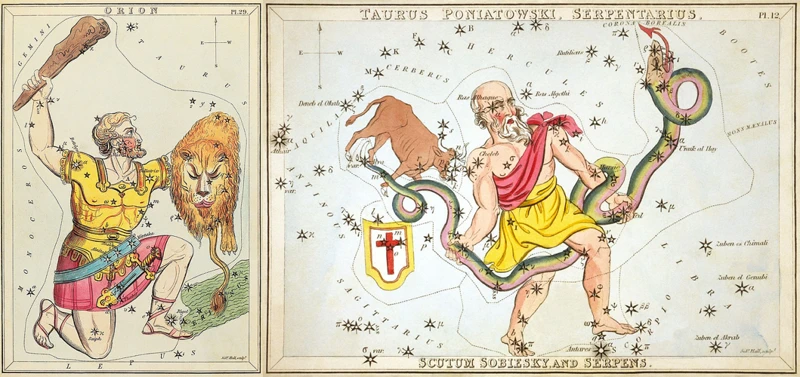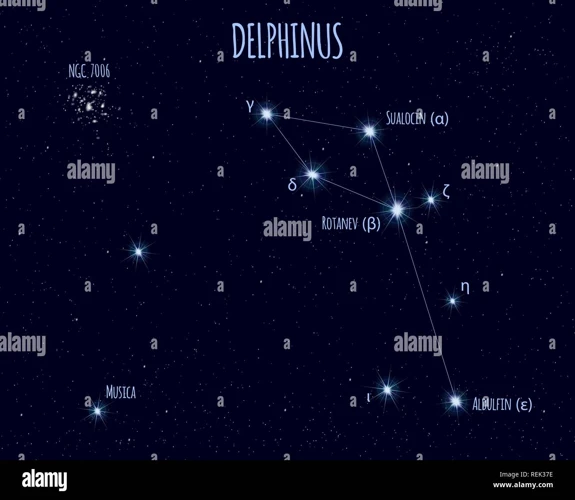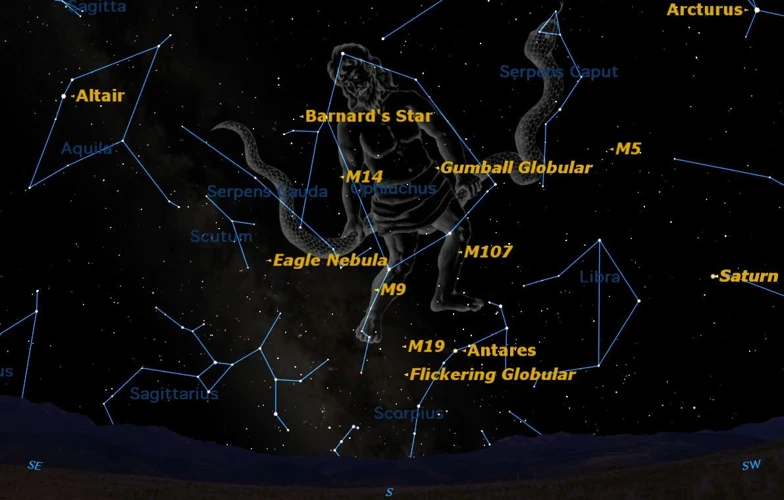Delphinus, the dolphin-shaped constellation, has captivated humanity’s imagination for centuries. This celestial entity, comprised of several stars forming the shape of a leaping dolphin, has a rich and fascinating history in various cultural and mythological contexts. Understanding the significance of Delphinus not only allows us to delve into the captivating world of ancient legends but also enables us to appreciate its celestial features and its importance in both astronomy and astrology. Unveil the mysteries of Delphinus as we explore its enthralling history, mythology, celestial wonders, and its enduring impact on human civilization.
Contents
- History of Delphinus
- Mythology and Legends
- Celestial Features of Delphinus
- Importance to Astronomy and Astrology
- Conclusion
-
Frequently Asked Questions
- What is the meaning of the constellation Delphinus?
- How many stars are there in the Delphinus constellation?
- Is Delphinus a prominent constellation?
- Can Delphinus be seen from both hemispheres?
- Is there any deep-sky object in Delphinus?
- What mythological significance does Delphinus hold?
- How old is the recognition of Delphinus as a constellation?
- Are there any notable celestial events associated with Delphinus?
- What is the cultural significance of Delphinus?
- Can Delphinus be used for astrological interpretations?
- References
-
Frequently Asked Questions
- What is the meaning of the constellation Delphinus?
- How many stars can be seen in Delphinus?
- Is Delphinus a part of any mythology?
- What is the history of Delphinus?
- Which deep-sky objects can be found in Delphinus?
- What is the significance of Delphinus in astrology?
- How can I locate Delphinus in the night sky?
- What are some other names for Delphinus?
- Is there any folklore related to Delphinus?
- What is the symbolism behind Delphinus?
- References
- Read More
History of Delphinus

Delphinus, the dolphin-shaped constellation, has a fascinating history that dates back to ancient times. It was first cataloged by the Greek astronomer Ptolemy in the 2nd century AD. However, the origins of its name and recognition as a constellation can be traced even further. The Egyptians associated this constellation with the annual flooding of the Nile, as they believed that the appearance of Delphinus in the night sky marked the beginning of the flood season. The ancient civilizations of Mesopotamia also had knowledge of Delphinus, referring to it as “the Dolphin” or “the Fish.” This constellation has been mentioned in various historical texts, including records from the 22nd century BC. Over time, Delphinus has been recognized and observed by different cultures, each attributing their own significance and symbolism to it. Its presence in the night sky has been a source of wonder and intrigue throughout human history, leaving a lasting legacy that continues to captivate stargazers to this day.
Mythology and Legends

Mythology and legends surrounding the Delphinus constellation have fascinated cultures throughout history. In Greek mythology, Delphinus is associated with a heartwarming tale. The story goes that there was a young musician named Arion who possessed immense talent. During one of his journeys, he found himself in great danger while aboard a ship. As he prayed for salvation from the sea god Poseidon, Delphinus, in the form of a dolphin, swiftly appeared and carried Arion safely to land. This act of divine intervention established Delphinus as a symbol of protection and aid in times of distress. In Norse mythology, the constellation is linked with the god Freyr and his connection to the sea, embodying the power of water and its mysteries. These mythical narratives showcase the enduring significance of Delphinus and its celestial representation in different cultures around the world.
The Dolphin in Greek Mythology
In Greek mythology, the dolphin holds a significant place in various stories and legends. One prominent myth involving a dolphin is the tale of Arion, a talented poet and musician. According to the ancient Greek poet Pindar, Arion found himself in danger while aboard a ship. Determined to save his life, Arion called out to the sea creatures, captivating them with his enchanting music. The dolphins, known for their love of music, were drawn towards Arion and quickly came to his rescue. One dolphin, in particular, carried him safely to shore. This compassionate act by the dolphin showcases its revered status in Greek mythology, symbolizing protection and assistance. The image of the dolphin carrying Arion has since become associated with Delphinus, immortalized in the night sky as a testament to the enduring bond between humans and these remarkable creatures. This mythical tale serves as a reminder of the deep connection humans have had with dolphins throughout history, inspiring a sense of wonder and admiration for these intelligent and graceful beings.
Delphinus in Different Cultures
Delphinus, the dolphin-shaped constellation, holds significance in various cultures around the world. In Greek mythology, Delphinus is associated with the story of Arion, a talented musician who was saved by dolphins after being thrown overboard by a ship’s crew. The dolphins carried Arion to safety, and as a result, Zeus placed them among the stars as a constellation to honor their act of bravery. In Norse mythology, dolphins were revered as powerful and intelligent creatures, often associated with the sea god Aegir. They were believed to have the ability to communicate with humans and were considered as messengers between the gods and mortals. In Chinese and Maori cultures, Delphinus is sometimes recognized as part of larger constellations, such as Aquila and Taniwha, respectively, where the dolphin shape is combined with other celestial figures to form intricate mythological stories. These diverse cultural interpretations showcase the enduring fascination and reverence for dolphins and their celestial representation in Delphinus, highlighting the universal admiration for these intelligent creatures across different civilizations.
Celestial Features of Delphinus

Delphinus, the dolphin-shaped constellation, is not only visually captivating but also possesses intriguing celestial features. It is home to several notable stars, including the brightest one, Alpha Delphini, also known as Sualocin. This star is significant because its name is actually the Latinized spelling of the surname of the discoverer of Delphinus, Nicolaus Venator. Another prominent star in the constellation is Beta Delphini, also called Rotanev. Both stars, Sualocin and Rotanev, can be easily identified within Delphinus, adding to its allure. Apart from these stars, Delphinus is also known for its deep-sky objects. One such object is the Delphinus Dwarf, a dwarf spheroidal galaxy that lies near the celestial equator. This galaxy, although small and faint, has captured the attention of astronomers due to its unique characteristics and proximity to our own Milky Way galaxy. Exploring the celestial features of Delphinus allows us to appreciate the wonders of the night sky and the vastness of our universe.
Star Names and Descriptions
In Delphinus, there are several notable stars that contribute to the beauty and uniqueness of this dolphin-shaped constellation. One of the most prominent stars within Delphinus is Rotanev, also known as Alpha Delphini. Rotanev is a binary star system consisting of two stars that orbit each other. The primary star, Rotanev A, has a magnitude of 3.8, making it easily visible to the naked eye. Its companion star, Rotanev B, has a fainter magnitude of 5.3. Another significant star in Delphinus is Sualocin, which is the reverse spelling of Nicolaus, the name of its discoverer, the Italian astronomer Niccolò Cacciatore. Sualocin is located near the tip of the dolphin’s nose and has a magnitude of 3.8. Another notable star in Delphinus is Gamma Delphini, also known as Sualocin’s neighbor. It has a magnitude of 4.3 and is located close to Sualocin. In addition to these stars, there are several other lesser-known stars that contribute to the constellation’s overall appearance and celestial beauty. Each star within Delphinus adds to the enchantment and allure of this graceful constellation, making it a sight to behold in the night sky.
Notable Deep-Sky Objects
Notable deep-sky objects within the constellation of Delphinus add to its celestial allure. One prominent feature is NGC 7006, an impressive globular cluster located about 130,000 light-years away. With its compact, spherical shape and a magnitude of 11.5, NGC 7006 is a captivating sight through telescopes. Another remarkable object is IC 4699, a small and faint planetary nebula situated approximately 3,000 light-years away. Known as the “Blue Flash Nebula,” IC 4699 derives its nickname from the blue-green coloration emitted by oxygen ions in its gaseous shell. Delphinus is also home to several other open star clusters, including Stephenson 1 and Collinder 437, which offer stunning views of young stars forming within their stellar nurseries. These deep-sky objects within Delphinus provide a visual feast for astronomers and stargazers alike, further enhancing the constellation’s cosmic significance.
Importance to Astronomy and Astrology

Delphinus holds a significant place not only in astronomy but also in astrology. From an astronomical perspective, studying Delphinus offers valuable insights into the complexities of stellar evolution and celestial dynamics. Astronomers have discovered several interesting features within Delphinus, including binary star systems and even a supernova remnant. The constellation’s stars provide astronomers with data for understanding stellar classifications, distances, and other essential parameters. Additionally, Delphinus is part of the larger celestial landscape, contributing to the intricate tapestry of constellations that form our night sky.
In astrology, Delphinus is less commonly acknowledged compared to some other zodiac signs and constellations. However, that does not diminish its significance entirely. For those who do consider Delphinus in their astrological interpretations, it represents intelligence, playfulness, and the ability to navigate challenging situations with grace. Its association with dolphins, known for their agility and intuition, further reinforces these attributes.
While Delphinus may not have an astrological zodiac sign, its presence in the night sky adds depth and complexity to astrological readings and interpretations. It serves as a reminder of the vastness and interconnectedness of the cosmos, stimulating contemplation about the role of celestial phenomena in shaping our lives and selves. For those who wish to delve deeper into the connection between astrology and personal growth, exploring complex astrological aspects, such as the challenging ones, can provide valuable insights into self-awareness and transformation.
Conclusion

In conclusion, Delphinus, the dolphin-shaped constellation, holds a significant place in human history, mythology, and astronomy. Its intriguing history, dating back to ancient civilizations, showcases the admiration and fascination humans have held for this celestial entity. From the Egyptians’ connection with the annual flooding of the Nile to the Greek astronomer Ptolemy’s recognition of this constellation, Delphinus has left an indelible mark on cultural narratives and celestial observations. Its prominence in different mythologies and cultures highlights its universal appeal and symbolism. Furthermore, Delphinus continues to captivate astronomers and stargazers with its distinct celestial features and deep-sky objects. The enduring importance of Delphinus in astrology and astronomy serves as a reminder of the vastness and wonders of the universe waiting to be explored. Whether through studying the stars and constellations or delving into the mystical narratives that surround them, humanity’s fascination with the celestial world remains an eternal quest for knowledge and wonder.
Frequently Asked Questions

What is the meaning of the constellation Delphinus?
The constellation Delphinus represents a dolphin in the night sky. It is named after the Latin word for “dolphin.”
How many stars are there in the Delphinus constellation?
Delphinus is home to several stars, with its brightest star being Alpha Delphini. In total, there are approximately 15 stars that make up the constellation.
Is Delphinus a prominent constellation?
While Delphinus may not be as well-known as some other constellations, it is still recognized and observed by stargazers around the world. Its distinct dolphin shape and rich history make it an intriguing sight in the night sky.
Can Delphinus be seen from both hemispheres?
Yes, Delphinus can be seen from both the northern and southern hemispheres. Its position in the celestial sphere allows for its visibility in various parts of the world.
Is there any deep-sky object in Delphinus?
Yes, Delphinus is home to a few notable deep-sky objects. One of these objects is the Delphinus Dwarf Galaxy, a small, faint galaxy located within the constellation.
What mythological significance does Delphinus hold?
Delphinus has mythological significance in various cultures. In Greek mythology, it is associated with the dolphin that helped the sea god Poseidon in his quest for love. The dolphin is often seen as a symbol of protection and assistance in many mythological stories.
How old is the recognition of Delphinus as a constellation?
The recognition of Delphinus as a constellation dates back to ancient times. It was first cataloged by Ptolemy in the 2nd century AD. However, its origins can be traced even further, with mentions of Delphinus in historical records from the 22nd century BC.
Are there any notable celestial events associated with Delphinus?
There are no specific celestial events associated with the Delphinus constellation. However, its presence in the night sky throughout the year allows for its observation during various astronomical phenomena, such as meteor showers or planetary alignments.
What is the cultural significance of Delphinus?
Delphinus holds cultural significance in different parts of the world. It has been associated with fertility, abundance, and the annual flooding of the Nile in Egyptian culture. In other cultures, the dolphin has symbolized protection, intelligence, and grace.
Can Delphinus be used for astrological interpretations?
While Delphinus is not one of the traditional zodiac constellations, it can still be used in astrological interpretations. Astrologers may analyze the position of Delphinus in relation to other celestial bodies to gain insights into a person’s personality traits or life events.
References
Frequently Asked Questions

What is the meaning of the constellation Delphinus?
The constellation Delphinus represents a dolphin in the night sky.
How many stars can be seen in Delphinus?
Delphinus is home to around 18 stars that are visible to the naked eye.
Is Delphinus a part of any mythology?
Yes, Delphinus is associated with various mythological stories and legends.
What is the history of Delphinus?
Delphinus has been known since ancient times and has been recognized by different cultures throughout history.
Which deep-sky objects can be found in Delphinus?
Some notable deep-sky objects in Delphinus include the globular cluster NGC 7006 and the planetary nebula IC 3568.
What is the significance of Delphinus in astrology?
In astrology, Delphinus is believed to bring traits such as playfulness, intelligence, and strong emotions to those born under its influence.
How can I locate Delphinus in the night sky?
Delphinus can be found in the northern hemisphere, between the constellations of Aquila and Pegasus. It forms a distinctive diamond shape.
What are some other names for Delphinus?
Delphinus is also known as the Dolphin constellation or the Job’s Coffin constellation.
Yes, there are several myths and legends that involve dolphins, some of which mention Delphinus.
What is the symbolism behind Delphinus?
Dolphins have long been associated with intelligence, agility, and protection, and these qualities are often attributed to Delphinus as well.







